Library of New Testament Studies: 2015 (35 vols.)
Digital Logos Edition
Overview
2015 was a banner year for the Library of New Testament Studies, featuring an array of fascinating titles, including Crucfixion and New Creation, Paul, Scribe, of Old and New, The Ritualized Revelation of the Messianic Age, Luke’s Christology of Divine Identity, and Children in Early Christian Narratives. Add every installment from the Library of New Testament Studies series published in 2015. You’ll be equipped to conduct cutting-edge research with 35 volumes of recent, critical, and influential scholarship on the Bible’s second testament. Cover the key developments in historical, cultural, linguistic, theological, and hermeneutical questions driving New Testament study. One of the oldest and most important monograph series on the New Testament ever produced, additions to The Library of New Testament Studies featured distinguished scholars such as Craig Evans, John Kloppenburg, and Urban C. von Wahlde as well as a number of young scholars whose work is already significantly influencing the field of New Testament studies.
Studying the Old Testament in the New Testament? Don’t miss the Library of New Testament Studies (LNTS) Old Testament in the New Testament Collection.

Key Features
- Provides the latest, cutting-edge research on the New Testament
- Covers a vast array of New Testament topics of interest to students of the Bible
- Includes contributions from young scholars as well as seasoned experts
- Contains every installment to the Library of New Testament Studies published in 2015
Product Details
- Title: Library of New Testament Studies: 2015
- Publisher: T&T Clark
- Series: Library of New Testament Studies (LNTS)
- Publication Date: 2015
- Volumes: 35
- Pages: 8,512
- Resource Type: Monographs
- Topic: New Testament Studies
Individual Titles
- The New Testament and the Church: Essays in Honour of John Muddiman edited by John Barton and Peter Groves
- ‘Behold, the Angels Came and Served Him’: A Compositional Analysis of Angels in Matthew by Kristian A. Bendoraitis
- Luke’s Christology of Divine Identity by Nina Henrichs-Tarasenkova
- The Unity of Male and Female in Jesus Christ: An Exegetical Study of Galatians 3.28c in Light of Paul’s Theology of Promise by Gesila Nneka Uzukwu
- Searching the Scriptures: Studies in Context and Intertextuality edited by Craig A. Evans and Jeremiah J. Johnston
- Composite Citations in Antiquity: Volume One: Jewish, Graeco-Roman, and Early Christian Uses edited by Sean A. Adams and Seth M. Ehorn
- The Ritualized Revelation of the Messianic Age: Washings and Meals in Galatians and 1 Corinthians by Stephen Richard Turley
- Psalm 110 and the Logic of Hebrews by Jared Compton
- Where is the Wise Man? Graeco-Roman Education as a Background to the Divisions in 1 Corinthians 1-4 by Adam G. White
- Creation Imagery in the Gospel of John by Carlos Raul Sosa Siliezar
- A Journey Round John: Tradition, Interpretation, and Context in the Fourth Gospel by Wendy E.S. North
- Written To Serve: The Use of Scripture in 1 Peter by Benjamin Sargent
- Children in Early Christian Narratives by Sharon Betsworth
- Crucifixion and New Creation: The Strategic Purpose of Galatians 6.11-17 by Jeff Hubing
- Jesus Wept: The Significance of Jesus’ Laments in the New Testament by Rebekah Eklund
- Revelation’s Hymns: Commentary on the Cosmic Conflict by Steven Grabiner
- Raymond Brown, ‘The Jews,’ and the Gospel of John: From Apologia to Apology by Sonya Shetty Cronin
- James, 1 & 2 Peter, and Early Jesus Traditions edited by Alicia J. Batten and John S. Kloppenborg
- Jesus and the Thoughts of Many Hearts: Implicit Christology and Jesus’ Knowledge in the Gospel of Luke by Collin Bullard
- Character Studies and the Gospel of Mark edited by Matthew Ryan Hauge and Christopher W. Skinner
- The Followers of Jesus as the ‘Servant’: Luke’s Model from Isaiah for the Disciples in Luke-Acts by Holly Beers
- Mark, Manuscripts, and Monotheism: Essays in Honor of Larry W. Hurtado edited by Dieter Roth and Chris Keith
- Jesus, the Sabbath, and the Jewish Debate: Healing on the Sabbath in the 1st and 2nd Centuries CE by Nina L. Collins
- Marcan Priority Without Q: Explorations in the Farrer Hypothesis edited by John C. Poirier and Jeffrey Peterson
- Paul, Scribe of Old and New: Intertextual Insights for the Jesus-Paul Debate by Yongbom Lee
- Gnosticism, Docetism, and the Judaisms of the First Century: The Search for the Wider Context of the Johannine Literature and Why It Matters by Urban C. von Wahlde
- A Cosmopolitan Ideal: Paul’s Declaration ‘Neither Jew Nor Greek, Neither Slave Nor Free, Nor Male and Female’ in the Context of First-Century Thought by Karin B. Neutel
- Swimming in the Sea of Scripture: Paul’s Use of the Old Testament in 2 Corinthians 4:7–13:13 by Paul Han
- New Testament Verbs of Communication: A Case Frame and Exegetical Study by Paul L. Danove
- The Open Mind: Essays in Honour of Christopher Rowland edited by Kevin Sullivan and Jonathan Knight
- Genre and Narrative Coherence in the Acts of the Apostles by Alan Bale
- Matthean Posteriority: An Exploration of Matthew’s Use of Mark and Luke as a Solution to the Synoptic Problem by Robert K. MacEwen
- Why Bíos? On the Relationship Between Gospel Genre and Implied Audience by Justin Marc Smith
- Paul and the Creation of a Counter-Cultural Community: A Rhetorical Analysis of 1 Cor. 5.1-11.1 in Light of the Social Lives of the Corinthians by Sin-pan Daniel Ho
- Hebrews and Divine Speech by Jonathan I. Griffiths
This title is included in the following collections
You can save when you purchase this product as part of a collection.
Library of New Testament Studi...
$4,843.30$3,499.992025 Researcher Portfolio Libr...
$4,749.99$3,562.492025 Baptist Portfolio
$4,749.99$3,562.492025 Orthodox Portfolio
$4,749.99$3,562.49
- $4,749.99$3,562.49
- $4,899.99$3,674.99
- $23,999.99$17,999.99
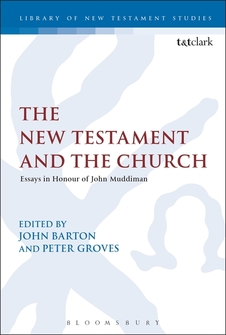
John Barton and Peter Groves present a range of chapters by leading scholarly voices from the worlds of biblical studies and the Church, looking at the study of the New Testament within and around the Church and the impact it has had and can have on Christian theology.
The essays in the volume adopt a style of critical engagement with biblical texts, through the prism of a modern and living Church. The focus of the volume is thus not only upon the New Testament itself, but upon how reading the New Testament is important for dialogue within the Church and within Christian denominations. Among the highly distinguished contributors are John Barton, Eric Eve, Mark Goodacre, Christopher Rowland, and Rowan Williams.
John Barton is Oriel and Laing professor of the Interpretation of Holy Scripture, University of Oxford. His previous publications include What is the Bible?, People of the Book?, Love Unknown, The Oxford Bible Commentary and The Biblical World.
Peter Groves is parish priest of St. Mary Magdalene, Oxford, and a member of the Faculty of Theology, Oxford University, UK.
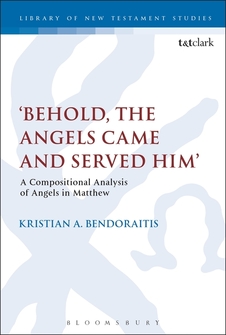
Angels have been analyzed in Christological research due to their primary function as messengers and mediators between heaven and earth. Their role in the Gospel narratives, however, has been largely unexplored.
Utilizing the Old Testament and sources from the Second Temple period to illustrate the variety of angel traditions, Bendoraitis identifies how these traditions are reflected in Matthew’s Gospel and interprets the passages in which angels appear or are represented, resulting in a detailed exegesis of those passages which specifically mention angels. Each reference is critically analyzed in view of its role in the Gospel’s narrative and in light of Matthew’s redactional hand. In addition, each chapter is accompanied by a discussion of relevant traditions of angels in order to illustrate how Matthew’s use of angels has facilitated his Gospel’s message. The examination concludes by postulating three factors in the inclusion of angel traditions in Matthew’s narrative, pertaining both to Matthew’s Christology and worldview.
Kristian A. Bendoraitis teaches at Spring Arbor University in Michigan.
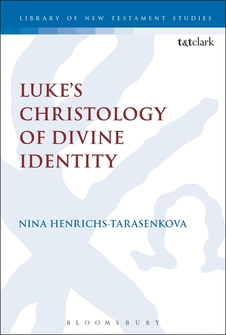
Henrichs-Tarasenkova argues against a long tradition of scholars about how best to represent Luke’s Christology. When read against the backdrop of ancient ways of constructing personal identity, key texts in the Lukan narrative demonstrate that Luke indirectly characterizes Jesus as the one God of Israel together with YHWH. Henrichs-Tarasenkova employs a narrative approach that takes into consideration recent studies of narrative and history and enables her to construct characters of YHWH and Jesus within the Lukan narrative. She employs Richard Bauckham’s concept of divine identity that she evaluates against her study of how one might speak of personal identity in the Greco-Roman world. She engages in close reading of key texts to demonstrate how Luke speaks of YHWH as God in order to demonstrate that Luke-Acts upholds a traditional Jewish view that only the God of Israel is the one living God and to eliminate false expectations for how Luke should speak of Jesus as God.
This analysis establishes how Luke binds Jesus’ identity to the divine identity of YHWH and concludes that the Lukan narrative, in fact, does portray Jesus as God when it shows that Jesus shares YHWH’s divine identity.
Nina Henrichs-Tarasenkova holds a PhD from London School of Theology/Brunel University, UK. Nina is affiliated with the Church of God movement and works as an adjunct instructor at University of Portland, USA.
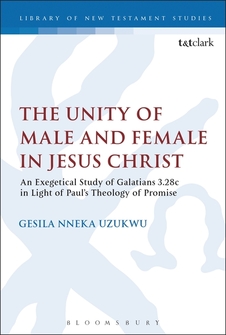
This detailed exegetical study of Gal 3.28c in the light of 3.14-29 and 4.21-31 shows not only how integral this verse is to chapters 3 and 4 of the letter, but also that it is the key to understanding Paul’s theological argument of promise in Galatians. Paul’s use of the story of Abraham in 3.14-29 and of Sarah in 4.21-31 in light of God’s promise to the patriarch and the matriarch in Genesis 17 displays the joint role of Abraham and Sarah in bringing about the promise, and underscores the unity of the believers in Christ.
In light of this, Uzukwu examines important aspects of the history of the interpretation of Gal 3.28c. Uzukwu sheds light on the link between Gal 3:28 and the three expressions of gratitude found in Greek writings. Links are also revealed to the three blessings of gratitude that appear at the beginning of the Jewish cycle of morning prayers, Gen 1.27c (in the Septuagint), and the alleged pre-Pauline baptismal formula. She goes further to demonstrate how 3.28c is related to the unity of Galatians 3-4, focusing on the theme of the promise as the text discusses the effect of the Christ event in bringing about the fulfillment of that promise.
Gesila Nneka Uzukwu (PhD, Katholieke Universiteit Leuven, Belgium) is a free researcher at the Katholieke Universiteit Leuven, and a member of the Daughters of Mary Mother of Mercy. She is also a lecturer at the Major Seminary of the Missionary Society of St. Paul in Abuja, Nigeria.
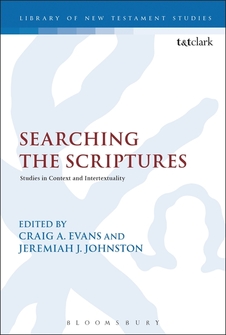
This work critically engages the hermeneutical methods used to analyse the New Testament writings, so that the lenses through which studies of the texts have been traditionally viewed can be revised. Jeremy Hultin contributes an article on the rhetorical use of the chosen citations by Jewish rabbis in their commentary on scripture, while Mark Gignilliat writes on the potential implications for viewing Old Testament Scripture in the manner of the early Church exegetes and theologians. With these two contributions providing a frame for the other chapters, the essays explore a range of topics, including the significance of the number 42 in Matthew, the study of Wisdom in Matthew, Hebrew material in the New Testament, and the uses of Scripture in the letters of Paul and the letters to the Hebrews.
Read separately, these articles provide fascinating insights and revisions to established ideas on intertextuality between the Old/Hebrew Bible and the New Testament writings. Taken together, the collection presents a solid argument for the fundamental revision of our current hermeneutical practice in Biblical Studies.
Dr. Craig A. Evans received his PhD in New Testament from Claremont Graduate University and his DHabil from the Karoli Gaspar Reformed University in Budapest. He is the John Bisagno Distinguished Professor of Christian Origins at Houston Baptist University in Texas.
Evans taught at Trinity Western University in British Columbia for 21 years, where he directed the graduate program in biblical studies and founded the Dead Sea Scrolls Institute. He has recently served on the advisory board for the Gospel of Judas for National Geographic Society and has appeared frequently as an expert commentator on network television programs.
Evans has written and edited extensively on the historical Jesus and the Jewish background of the New Testament era. His published works include From Prophecy to Testament, Jesus and the Ossuaries, Jesus: The Final Days, and Dictionary of New Testament Background.
Jeremiah J. Johnston is associate professor of Early Christianity at Houston Baptist University, USA.
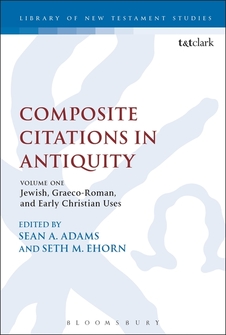
Sean A. Adams and Seth M. Ehorn have drawn together an exciting range of contributors to evaluate the use of composite citations in Early Jewish, Greco-Roman, and Early Christian authors (up through Justin Martyr). The goal is to identify and describe the existence of this phenomenon in both Greco-Roman and Jewish literature. The introductory essay will help to provide some definitional parameters, although the study as a whole will seek to weigh in on this question. The contributors seek to address specific issues, such as whether the quoting author created the composite text or found it already constructed as such. The essays also cover an exploration of the rhetorical and/or literary impact of the quotation in its present textual location, and the question of whether the intended audiences would have recognised and ‘reverse engineered’ the composite citation and, as a result, engage with the original context of each of the component parts.
In addition to the specific studies, Professor Christopher Stanley provides a summary reflection on all of the essays in the volume along with some implications for New Testament studies.
Sean A. Adams is a lecturer at the University of Glasgow.
Seth M. Ehorn is visiting assistant professor of Greek Language and New Testament at Wheaton College. He has published articles in the Journal for Theological Studies, Currents in Biblical Research and is a contributor to the Encyclopaedia of Biblical Reception.
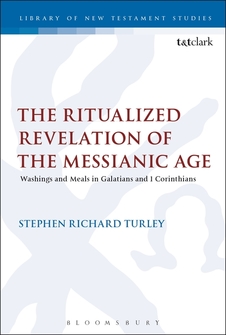
Turley begins by surveying the history of the interface between ritual studies and Pauline scholarship, identifying the scholarly gaps in both method and conclusions and a ritual theory adequate to address such gaps. The focus of the work is then on the two rituals that identified the Pauline communities: ritual washings and ritual meals. Turley explores Galatians and 1 Corinthians, two letters that present the richest spread of evidence pertinent to ritual theory.
By exploring Paul’s reference to ritual washings and meals with a heuristic use of ritual theory, Turley concludes that rituals in early Christianity were inherently revelatory, in that they revealed the dawning of the messianic age through the bodies of the ritual participants. This bodily revelation established both a distinctly Christian ethic and a distinctly Christian social space by which such an ethical identity might be identified and sustained.
Stephen Richard Turley teaches Theology, Greek, and Rhetoric at Tall Oaks Classical School in New Castle, USA, and is professor of fine arts at Eastern University.
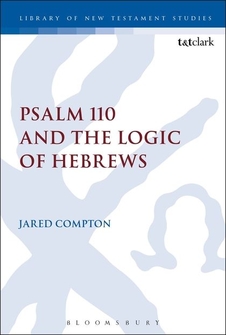
A neglected area of study of the letter to the Hebrews is the function of the Old Testament in the letter’s logic. Compton addresses this neglect by looking at two other ideas that have themselves received too little attention, namely (1) the unique and fundamental semantic contribution of Hebrews’ exposition (vis-à-vis its exhortation) and (2) the prominence of Ps 110 in the author’s exposition. The conclusion becomes clear that Hebrews’ exposition-its theological argument-turns, in large part, on successive inferences drawn from Ps 110:1 and 4.
Compton observes that the author uses the text in the first part of his exposition to (1) interpret Jesus’ resurrection as his messianic enthronement, (2) connect Jesus’ enthronement with his fulfillment of Ps 8’s vision for humanity and, thus, (3) begin to explain why Jesus was enthroned through suffering. In the second and third parts of his exposition, the author uses the text to corroborate the narrative initially sketched. Thus, he uses the text to (1) show that messiah was expected to be a superior priest and, moreover, (2) show that this messianic priest was expected to solve the human problem through death.
Jared Compton is a pastor at CrossWay Community Church in Bristol, Wisconsin, USA.
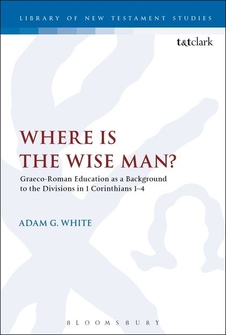
The divisions in the Corinthian church are catalogued by Paul in 1 Corinthians 1:12: "Each of you says, ‘I follow Paul,’ or ‘I follow Apollos,’ or ‘I follow Cephas,’ or ‘I follow Christ.’” White shows how these splits are found in the milieu of 1st-century Graeco-Roman education. By consulting relevant literary and epigraphic evidence, White develops a picture of ancient education throughout the Empire generally, and in Roman Corinth specifically. This serves as a backdrop to the situation in the Christian community, wherein some of the elite, educated members preferred Apollos to Paul as a teacher since Apollos more closely resembled other teachers of higher studies.
White takes a new and different direction to other studies in the field, arguing that it is against the values inculcated through “higher education” in general that the teachers are being compared. By starting with this broader category, one that much better reflects the very eclectic nature of Graeco-Roman education, a sustained reading of 1 Corinthians 1–4 is made possible.
Adam G. White is lecturer at Alphacrucis College, Sydney, Australia.
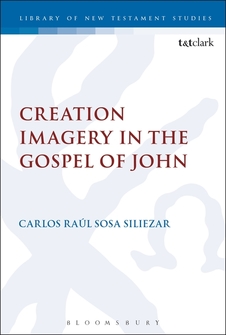
Sosa Siliezar investigates the presence and significance of creation imagery in the Gospel of John. He argues that John has intentionally included only a limited (albeit significant) number of instances of creation imagery and that he has positioned them carefully to highlight their significance.
Sosa Siliezar contends that the instances of creation imagery used in varying contexts function collectively in a threefold way that is consonant with John’s overall argument. First, John uses them to portray Jesus in close relationship with his Father, existing apart from and prior to the created order. Second, John uses creation imagery to assert the primal and universal significance of Jesus and the message about him, and to privilege him over other important figures in the story of Israel. Third, John uses creation imagery to link past reality with present and future reality, portraying Jesus as the agent of creation whom the reader should regard as the primal agent of revelation and salvation. The book concludes by underscoring how these findings inform our understanding of John’s Christology and Johannine dualism.
Carlos Raul Sosa Siliezar is a lecturer at several universities in Guatemala City, Guatemala.
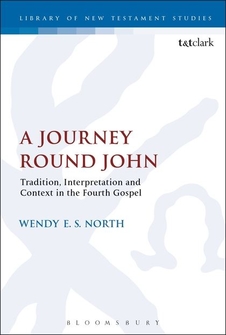
In A Journey Round John, Wendy E.S. North considers a range of themes relevant to the interpretation of the Fourth Gospel. First, the relationship between the Gospel and 1 John. North explores the value of the Epistle as a means of identifying traditional material the evangelist knew, on which basis she appeals to 1 John to account for the form of Jesus’ prayer in chapter 11. Second, John’s Christology in which North looks to John’s cultural roots in monotheistic Judaism to understand his capacity to align Jesus with God. Third, the crucial issue of ‘the Jews’ in John, where North clarifies the data by observing a narrative logic in John’s use of the expression. Fourth, North identifies John’s ‘anticipated’ eschatology as a consolation strategy aimed at a readership struggling under life-threatening circumstances in the absence of Jesus. Finally, North looks at John and the Synoptics, and demonstrates how evidence drawn from the Gospel itself can serve to indicate whether or not John composed directly on the basis of the Synoptic record.
This collection draws together a number of ground-breaking studies from over 30 years of work on the Fourth Gospel, presenting a coherent development of thought on this crucial Christian text.
Wendy E.S. North formerly taught in the Department of Theology, University of Hull, United Kingdom.
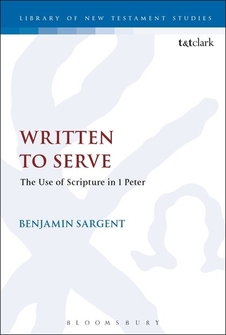
The use of Scripture in 1 Peter has been subject to much extensive analysis in the last 30 years. In Written to Serve Benjamin Sargent offers an up-to-date and comprehensive analysis of how 1 Pet 1.10-12 offers a ‘hermeneutic,’ providing an insight into how Scripture is interpreted in the letter. Sargent also argues that the relation of 1.10-12 has been misunderstood. Rather than offering a Christological hermeneutic with a focus on the suffering and glories of Christ, Sargent asserts that the primary importance of 1.10-12 is its orientation of the prophetic witness towards the eschatological community as an act of service. Similarly, rather than offering a theological narrative of continuity between Israel and Christian communities, 1.10-12 may be seen to suggest a narrative of profound discontinuity in which the community in the present is elevated above God’s people of the past.
Benjamin Sargent is research fellow at Wycliffe Hall, Oxford, United Kingdom.
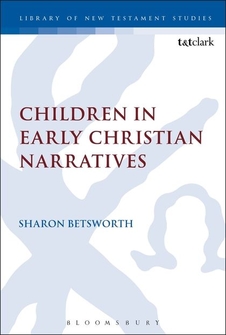
Sharon Betsworth examines the narratives, parables, and teachings of and about children in the gospels and the literature of Early Christianity. Betsworth begins with a discussion of the social-historical context of children and childhood in the first century before discussing the role of children in all four gospels. She shows that for Mark and Matthew, children are integral to understanding each evangelist’s perspective on the reign of God and on Jesus’ identity in each Gospel. In the Gospel of Luke, the childhood of Jesus is shown to be crucial to the broader themes of the Gospel. In the Gospel of John, Betsworth examines the metaphorical use of the word ‘children’ looking at ‘children of light’ and of ‘darkness.’ She then explores stories of Jesus’ childhood in the non-canonical Infancy Gospels of James and Thomas, as well as the childhood of his mother, Mary, in the latter shedding light upon views of children, discipleship, and the person of Jesus in Early Christianity and in the ancient world more generally.
Sharon Betsworth is the associate professor of New Testament at Oklahoma City University.
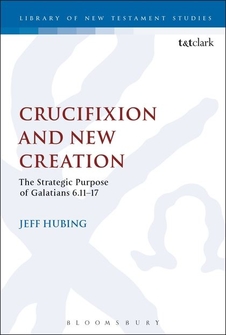
This book provides an interpretation of Galatians 6:11-17, which yields significant insights about Paul’s perception of the crisis in Galatia, and the solution he presents to his readers in light of it. In the first section of the book, the epistolary form and function of Galatians 6:11-17 are analysed. Revealed as a body-closing, it works to sharpen and complete Paul’s message by spelling out his motivation for writing and establishing the basis for further communication with his readers. The theme of persecution in the letter is then seen rendered both explicitly and implicitly through the examination of pertinent passages. These indicate that all parties involved share some connection to persecution. Finally, an exegetical analysis of Galatians 6:11-17 reveals Paul’s claim that the agitators’ primary motive is to avoid persecution ‘because of the cross of Christ.’ He contrasts them with himself by ‘boasting’ in that same cross. The net effect is that Paul draws on both the redemptive moment of Jesus’ death, and the ongoing cross-shaped life he lives, to validate his apostleship.
Jeff Hubing is the president of FIRE School of Ministry in Chicago, a training centre for Christian ministry and leadership. He also serves as adjunct professor of New Testament at Northern Seminary.
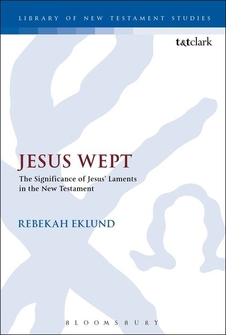
Lament does not seem to be a pervasive feature of the New Testament, particularly when viewed in relation to the Old Testament. A careful investigation of the New Testament, however, reveals that it thoroughly incorporates the pattern of Old Testament lament into its proclamation of the gospel, especially in the person of Jesus Christ as he both prays and embodies lament.
As an act that fundamentally calls upon God to be faithful to God’s promises to Israel and to the church, lament in the New Testament becomes a prayer of longing for God’s kingdom, which has been inaugurated in the ministry and resurrection of Jesus, fully to come.
Rebekah Eklund is assistant professor of Theology at Loyola University in Maryland.
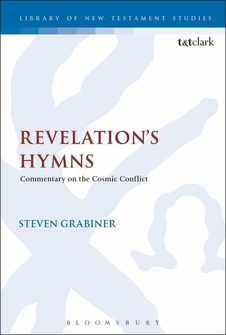
Revelation’s Hymns examines the hymnic pericopes in Revelation in light of the cosmic conflict theme. It considers this theme as integral to the development of Revelation’s plot. Recognizing that critical studies give interpretative primacy to the political realities that existed at the time of Revelation’s composition, Grabiner responds to the need for an examination of the storyline from the perspective of issues that are of narrative importance.
Grabiner argues that the cosmic conflict is at the centre of the book’s concerns, and attempts to determine the function of the hymns with respect to this. Previous examinations of the hymns have considered them as a response and/or parody to Roman liturgy, examples of God’s unquestioned sovereignty, or expressions of thematic overtones found throughout the book. While these approaches make a contribution to a greater understanding of the hymns, the relation to the ever-present conflict theme has not been explored. This study allows the hymnic sections to engage with the larger narrative issue as to who is truly the rightful sovereign of the universe.
Steven Grabiner graduated from the University of South Africa and is president of an international mission organization that works in more than 30 countries.
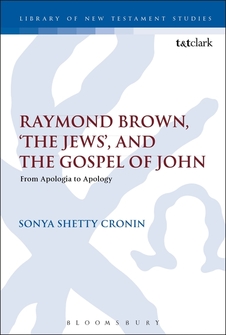
Until the mid-1960s, most commentators of the Gospel of John were aware of a polemic against ‘the Jews,’ yet they did not consider it with reference to contemporary ethical discussion. A shift in focus in Johannine scholarship is noticeable from the mid-1960s and 1970s to the present, where commentators began to connect the Gospel’s polemic against ‘the Jews’ with potential anti-Judaism in the text. As yet, very little work has been done to answer the question of how this change in sensitivity came about. This book is a historiography of one scholar’s growing awareness of potential anti-Judaism in the Gospel of John with the intention of using this individual history to explain the larger trend in biblical studies. Sonya Cronin examines the published work of Raymond Brown, a prominent Catholic New Testament scholar, between the years 1960-1998. The book contextualizes Brown’s work by evaluating the impact of ecclesiastical statements and the influence of earlier and contemporary Johannine scholarship on Brown’s biblical interpretation, and then posits theories as to why change occurs at specific times.
Sonya Shetty Cronin has taught various biblical studies courses. Her research interests include anti-Judaism in the New Testament and the intersection of religion and modern fantasy.
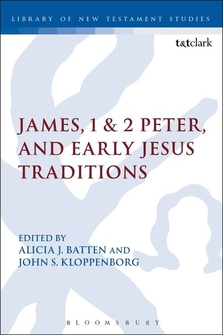
This book studies comparisons and possible trajectories between three ‘catholic’ epistles: James, 1 and 2 Peter, and traditions associated with Jesus. It covers a range of approaches, exploring the extent to which these letters ‘allude’ to Jesus’ teachings, how they share similar themes, and how and why the letters recall specific memories of the figure of Jesus as found in the Gospels or in Pauline traditions.
Studies have argued that James has alluded to some of the sayings attributed to Jesus, but there is no consensus as to what extent or why. Part A analyzes why James would ‘allude’ to the teachings of Jesus, how he alters these teachings, and what such adaptations suggests about his audience. Part B turns to the Jesus tradition and 1 and 2 Peter. What can 1 Peter’s use of Isaiah 53 tell us about the historical Jesus? How has 1 Peter conflated early Jesus traditions with those of ancient Judaism in order to develop certain ideas? How does 2 Peter allude to Gospel traditions? Moreover, how does the author of 2 Peter use early Jesus traditions as a sort of testimony?
The book is important in assisting scholarly thought about source criticism, ancient rhetoric, the influence of Hellenistic, Judean and Roman traditions on early Christianity, and its social history in general.
Alicia J. Batten is associate professor of religious studies and theology at Conrad Grebel University College at the University of Waterloo. Her recent publications include Friendship and Benefaction in James and What Are They Saying About the Letter of James?.
John S. Kloppenborg is professor and chair of the Department for the Study of Religion at the University of Toronto. His Recent publications include Attica, Central Greece, Macedonia, Thrace, and Q, The Earliest Gospel: An Introduction to the Original Sayings and Stories of Jesus.

In the Gospel of Luke, the aged Simeon foresees the future opposition which Jesus will face (2.34-35) and concludes his ominous oracle with a vivid description of the final outcome of Jesus’ ministry: ‘. . . so that the thoughts of many hearts may be revealed’ (2.35). Bullard presents an investigation of the narrative and Christological significance of this ‘revelation of thoughts’ in the ministry of Jesus, especially as this revelation is demonstrated and fulfilled in Jesus’ ability to know the thoughts in the hearts of those whom he encounters throughout the Gospel.
Bullard first explores a number of potential literary parallels to Jesus’ knowledge of thoughts in Greco-Roman and Jewish sources. He then undertakes a narrative-and redaction-critical study, which spans the Gospel in order to provide a full description of the ‘revelation of thoughts’ in Jesus’ ministry. What Jesus knows and how he knows it are fundamental features of his identity, governing how he relates to others in the narrative. Yet the issue of whether, or how, Jesus’ knowledge of thoughts fits into Luke’s overall Christological portrait has been given only superficial attention. Bullard offers an account of the Christological significance of Jesus’ knowledge that makes sense of both its internal narrative development and external literary parallels.
Collin Bullard completed his PhD at the University of Cambridge, UK. He is the senior pastor of First Baptist Church, Woodville, Texas.
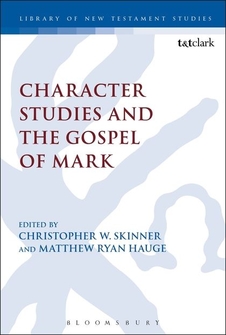
Characters in the second Gospel are analysed and an in-depth look at different approaches currently employed by scholars working with literary and reader-oriented methods of analysis is provided. The first section consists of essays on method/theory, and the second consists of seven exegetical character studies using a literary or reader-oriented method. All contributors work from a literary, narrative-critical, reader-oriented, or related methodology.
The book summarizes the state of the discussion and examines obstacles to arriving at a comprehensive theory of character in the Second Gospel. Specific contributions include analyses of the representation of women, God, Jesus, Satan, gentiles, and the Roman authorities of Mark’s Gospel. This work is both an exploration of theories of character, and a study in the application of those theories.
Matthew Ryan Hauge, is associate professor of biblical studies at Azusa Pacific University. A revised version of his dissertation, The Biblical Tour of Hell, is currently under review for inclusion in the Library of New Testament Studies Series, and he is scheduled to contribute to New Testament and Empire.
Christopher W. Skinner is associate professor of religion at the University of Mount Olive.
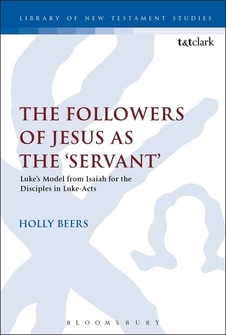
Luke models his portrayal both of Jesus and his disciples in Luke-Acts after the human agent of the Isaianic New Exodus in Isaiah 40-66. In the Isaianic New Exodus, the servant is integral to the restoration—the servant’s mission being embodied is, to a great extent, how the New Exodus comes to fruition.
The servant connection is at times explicit, as Jesus is identified with the servant in Luke 4:18-19 (quoting Isa 61:1-2 [with 58:6]), Luke 22:37 (citing Isa 53:12), and Acts 8:32-33 (Isa 53:7-8). Regarding the disciples, Isaiah 49:6 is quoted by Paul in Acts 13:47 in reference to himself and Barnabas, though a focus only on quotations is too limiting. Allusions to servant passages abound. This work argues that Luke sees Jesus fulfilling the servant role in an ultimate sense, but that his followers, modelled after him in Acts, also embody it. This can be seen in Luke’s use of Isaianic servant imagery, including suffering, lack of violent response (to unjust treatment), and language in the disciples’ characterization.
Holly Beers is instructor of religious studies at Westmont College in Santa Barbara, California.
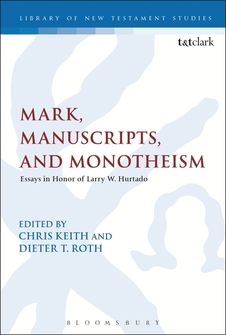
Mark, Manuscripts, and Monotheism is organized into three parts: Mark’s Gospel, Manuscripts and Textual Criticism, and Monotheism and Early Jesus-Devotion. With contributors hailing from several different countries, and including both senior and junior scholars, this volume contains essays penned in honor of Larry W. Hurtado by engaging and focusing upon these three major emphases in his scholarship. The result is not only a fitting tribute to one of the most influential New Testament scholars of present times, but also a welcome survey of current scholarship.
Dieter Roth is Wissenschaftlicher Mitarbeiter (Post-Doctoral Fellow) at Johannes Gutenberg-Universität Mainz, Germany.
Chris Keith is professor of New Testament and Early Christianity and director of the Centre for the Social-Scientific Study of the Bible at St. Mary’s University College, Twickenham, UK. He is the author of The Pericope Adulterae, the Gospel of John and the Literacy of Jesus, a winner of the 2010 John Templeton Award for Theological Promise, and Jesus’ Literacy: Scribal Culture and the Teacher from Galilee. He is also the co-editor of Jesus among Friends and Enemies: A Historical and Literary Introduction to Jesus in the Gospels, and was recently named a 2012 Society of Biblical Literature Regional Scholar.
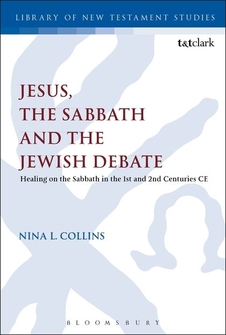
The claim that Jesus was criticised by the Pharisees for performing cures on the Sabbath has been continuously repeated for almost 2,000 years. But a meticulous, unprejudiced evaluation of the relevant Gospel texts shows that the historical Jesus was never criticised by historical Pharisees for performing Sabbath cures. In fact, Jesus and the Pharisees were in complete agreement for the need for cures on the Sabbath day. It is also clear that the Sabbath healing events in the Gospels have preserved a significant part of the history of the early Jewish debate which sought to resolve the apparent conflict between the demands of Jewish law, and the performance of deeds of healing and/or saving life. This debate, from its Maccabean origins through to the end of the second century CE, is the subject of this book. The story of the debate has escaped the attention of historians partly because it relies on the evidence of both the early postbiblical Jewish texts and the Christian Gospels, which are not generally studied together.
Nina L. Collins lectured on Judaism and Modern and Classical Hebrew at the University of Leeds. Her publications include The Library in Alexandria and the Bible in Greek.
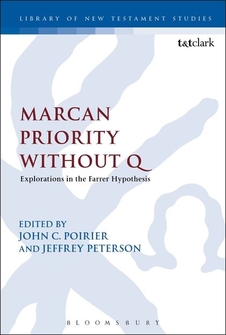
This book discusses the composition of the synoptic gospels from the perspective of the Farrer hypothesis, a view that posits that Mark was written first, that Matthew used Mark as a source, and that Luke used both Mark and Matthew. All of the articles in the volume are written in support of the Farrer hypothesis, with the exception of the final chapter, which criticizes these articles from the perspective of the reigning Two-Source theory. The contributors engage the synoptic problem with a more refined understanding of the options set before each of the evangelists pointing towards a deepened understanding of how works were compiled in the first and early second centuries CE.
The contributors include Andris Abakuks, Stephen Carlson, Eric Eve, Mark Goodacre, Heather Gorman, John S. Kloppenborg, David Landry, Mark Matson, Ken Olson, Michael Pahl, Jeffrey Peterson, and John C. Poirier.
John C. Poirier is chair of biblical studies at Kingswell Theological Seminary.
Jeffrey Peterson is Jack C. and Ruth Wright Professor of New Testament, Austin Graduate School of Theology.
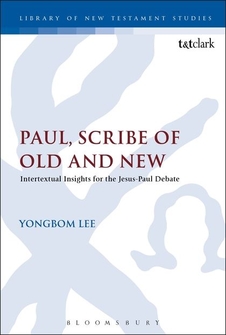
In this study, Yongbom Lee re-examines the old Jesus-Paul debate with insights from current studies on intertextuality in Paul. Lee identifies Paul’s typical ways of handling authoritative traditions in a number of cases providing a set of expectations as to how his use of them elsewhere might look.
Lee begins by investigating the use of the Scriptures in the Rule of the Community and the Damascus Document. He then examines five cases of Paul’s use of the Scriptures and contemporary Jewish exegetical traditions and three cases of his use of the Jesus tradition. Despite the skepticism concerning Paul’s knowledge and appreciation of the Jesus tradition, the fact that his use of the Jesus tradition is similar to that of the Scriptures and contemporary Jewish exegetical traditions-with respect to its presumption of authority, various citation methods, and its creative application to the situation of his readers-provides the evidence for its importance to him.
Yongbom Lee is the English Ministry pastor at Los Angeles Antioch Presbyterian Church, and is an adjunct professor at Fuller Theological Seminary. He also teaches at Central Baptist Theological Seminary, Azusa Pacific University, and Bethesda University of California.
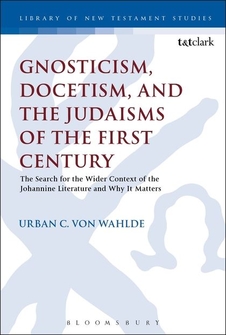
Gnosticism, Docetism, and the Judaisms of the First Century: The Search for the Wider Context of the Johannine Literature and Why It Matters
- Author: Urban C. von Wahlde
- Series: Library of New Testament Studies
- Publisher: T&T Clark
- Publication Date: 2015
- Pages: 192
In this book, von Wahlde provides an exploration of three distinct cultural and religious backgrounds against which scholars have frequently proposed that the Gospel and Letters of John are to be read and understood.
von Wahlde examines each of these three possibilities in turn, and shows how they may be regarded as plausible or implausible depending upon the evidence available. von Wahlde shows that there are features within the Gospel and/or Letters of John that do in fact suggest that they were influenced either by Gnosticism, Docetism, or one of the variant forms of Judaism. However, in each case, while some of the evidence suggests a particular background, von Wahlde shows that it is equally evident that not all of the evidence can be seen to suggest the same background. Through an examination of the origins and purpose of the Gospel, and drawing on the conclusions of his well-regarded commentary on the Johannine literature, von Wahlde presents a new way of understanding the Gospel in its wider contexts.
Urban C. von Wahlde is professor of New Testament at Loyola University, Chicago.
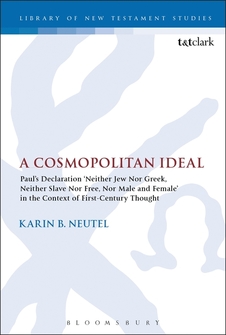
A Cosmopolitan Ideal: Paul’s Declaration ‘Neither Jew Nor Greek, Neither Slave Nor Free, Nor Male and Female’ in the Context of First-Century Thought
- Author: Karin B. Neutel
- Series: Library of New Testament Studies
- Publisher: T&T Clark
- Publication Date: 2015
- Pages: 288
What did Paul mean when he declared that there is ‘neither Jew nor Greek, neither slave nor free, nor male and female’ (Galatians 3:28)? While many modern readers understand these words as a statement about human equality, this study shows that it in fact reflects ancient ideas about an ideal or utopian community. With this declaration, Paul contributed to the cultural conversation of his time about such a community.
The three pairs that Paul brings together in this formula all played a role in first-century conceptions of what an ideal world would look like. Such conceptions were influenced by cosmopolitanism, the philosophical idea prevalent at the time that all people were fundamentally connected and could all live in a unified society. Understanding Paul’s thought in the context of these contemporary ideals helps to clarify his attitude towards each of the three pairs in his letters. Like other ancient utopian thinkers, Paul imagined the ideal community to be based on mutual dependence and egalitarian relationships.
Karin B. Neutel is lecturer in New Testament and Early Christianity at the University of Groningen, The Netherlands.
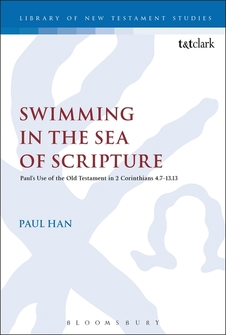
In examining the appropriation of Scripture in 2 Corinthians 4–13, Han argues that the apostle is not only aware of the original contexts of the passages he refers to, but also goes beyond the immediate contexts and brings in the larger context of the Old Testament.
In the course of adapting the Scripture, necessary changes of referent occur and Paul appears to use the method of identification in reading the Old Testament. Whether it is Paul himself, the Corinthians, or the opponents, various kinds of identification take place with the scriptural writers and the characters mentioned in it. This identification extends even to the point of identifying the Corinthians with the Servant of Isaiah, Jesus, and God. From this it is suggested that there is a concept of ‘corporate identity’ present throughout the chapters, which is also seen in the Old Testament.
In many cases, Paul’s basic thrust is sufficiently clear even without any understanding of scriptural references he makes. This is because Paul often makes a rhetorical use of the Scripture by citing a text at climactic points or near the closing of a section he is developing to strengthen his points, even as he brings in the ‘big picture’ of the Old Testament.
Paul Han completed his doctorate at London School of Theology, UK, and is currently involved in ministry at Myungsung Church, Seoul, South Korea.
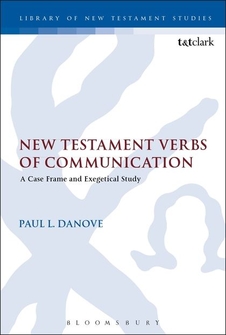
Paul Danove builds upon his previous work in the field of biblical linguistics to provide a refinement to the method of Case Frame analysis as applied to the Greek of the New Testament. He also shows how the method can be used in clarifying elements of Greek grammar, interpretation, and translation.
In particular, Danove distinguishes the semantic implications of active, middle, and passive usages of verbs. He establishes a rigorous basis for distinguishing semantic synonyms and near-synonyms and for clarifying their implications for interpretation and translation. Additionally, he generates an heuristic feature model for relating distinct usages of verbs and deriving their various connotations, and he seeks to clarify the conceptual and grammatical differences of verbs of oral and non-oral communication.
Paul L. Danove is professor of New Testament Studies at Villanova University, USA.
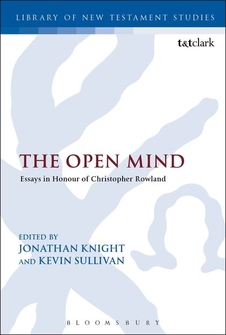
This Festschrift draws on the research interests of Christopher Rowland. The collection of essays comes from former doctoral students and other friends, many of whom shed light on the angelic contribution to the thought-world of developing Christianity. The significance of the Jewish contribution to developing Christian ideology is critically assessed, including the impact of the original Jewish sources on the earliest Christian belief. The distinguished contributors to this volume include April DeConick, Paul Foster, John Rogerson, Tobias Nicklas, and Andrei Orlov.
Kevin Sullivan is associate professor and chair of the Religion Department at Illinois Wesleyan University, USA.
Jonathan Knight is research fellow of the Katie Wheeler Trust and Visiting Fellow in New Testament and Christian Ministry at York St John University. Previous appointments include lecturer and research fellow in Biblical Studies at Sheffield University, chaplain and research assistant to Stephen Sykes and chaplain of Worcester College, Oxford. He is the author of Jesus: An Historical and Theological Investigation (T&T Clark, 2004), Luke’s Gospel (Routledge, 1998), and The Ascension of Isaiah (Sheffield Academic Press, 1995), and editor, with Stephen Sykes and John Booty, of The Study of Anglicanism (SPCK, 1998).
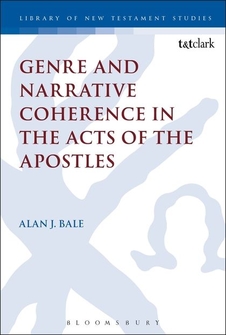
Focusing specifically on the issue of genre methodology in Acts, Bale’s work will have clear ramifications for the study of biblical texts in general. The first part of the work surveys the state of genre theory in Acts scholarship and demonstrates its inadequacy for both classifying and interpreting Acts. Bale constructs a new genre model rooted in contemporary genre theory, tackling the problematic issue in biblical scholarship of the relationship between history and fiction in literature. From this theoretical analysis, Bale presents a new, pragmatic model for genre, which is non-exclusive and heavily intertextual.
In part two, Bale utilises the model in three original readings, which draw heavily upon parallels from ancient literature. The first reading shows how a specific device at the beginning of Acts dictates interpretation. The second looks at the problem of Paul’s status as apostle in Acts from a narrative rather than a propositional perspective. The final reading explores several passages in Acts, which may instructively be read as incorporating themes and techniques from ancient comedy and related genres.
Alan Bale completed his PhD at the University of Birmingham, UK, in 2012, since which time he has been working at the Institute for Textual Studies and Electronic Editing with Professor David Parker.
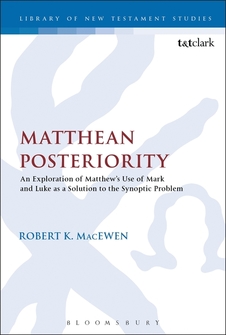
This book explores the Matthean Posteriority Hypothesis (MPH), a largely neglected solution to the Synoptic Problem, which holds that the author of the Gospel of Luke used the Gospel of Mark as a source, and that the author of the Gospel of Matthew used both the Gospel of Mark and the Gospel of Luke as sources.
The study begins with a survey of the scholars who have defended various forms of the MPH. Chapter 2 discusses two lines of evidence in support of the MPH. The first line of evidence is textual-demonstrating that Matthew knew the contents of Luke’s Gospel beyond merely the double tradition material. The second line of evidence, involving a study of strings of verbatim agreements in the Gospels, supports the view that Matthew depended directly on Luke. This chapter also includes a discussion of Luke’s Sondergut parables. Chapter 3 explores evidence and arguments which can be seen as problematic for the MPH. The book concludes that the MPH has been neither definitely proved nor disproved, and deserves further scholarly scrutiny.
Robert K. MacEwen is a lecturer of Biblical Studies and director of the Chinese Theology Department at the East Asia School of Theology, Singapore. He received his PhD in Biblical Studies from Dallas Theological Seminary.
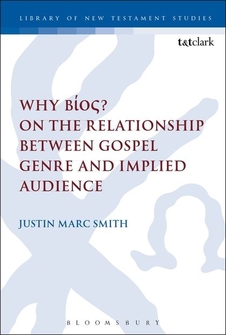
Justin Marc Smith argues that the Gospels were intended to be addressed to a wide and varied audience. He does this by considering them to be works of ancient biography, comparative to the Greco-Roman biography. The earliest Christian interpreters of the Gospels did not understand their works to be sectarian documents. Rather, the wider context of Jesus literature in the second and third centuries points toward the broader Christian practice of writing and disseminating literary presentations of Jesus and Jesus traditions as widely as possible.
Smith addresses the difficulty in reconstructing the various gospel communities that might lie behind the Gospel texts and suggests that the ‘all nations’ motif present in all four of the canonical Gospels suggests an ideal secondary audience beyond those who could be identified as Christian.
Justin Marc Smith is assistant professor at Azusa Pacific University.
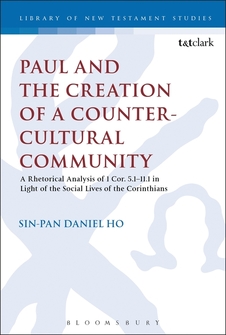
Paul and the Creation of a Counter-Cultural Community: A Rhetorical Analysis of 1 Cor. 5.1-11.1 in Light of the Social Lives of the Corinthians
- Author: Sin-pan Daniel Ho
- Series: Library of New Testament Studies
- Publisher: T&T Clark
- Publication Date: 2015
- Pages: 240
This study offers a new interpretation of 1 Corinthians 5-11:1. Taking a social identity approach, Ho investigates the inner logic of Paul from the ears of the Corinthian correspondence. Ho argues that Paul consistently indoctrinates new values for the audience to uphold, which are against the mainstream of social values in the surrounding society. It is shown that Paul does not engage in issues of internal schism per se, but rather in the question of the distinctive values insiders should uphold so as to be recognisable to outsiders. While church is neither a sectarian nor an accommodating community, it should maintain constant social contact with outsiders so as to bring the gospel of Christ to them. In addition, insiders should practice radical values that could challenge the existing shared social values prevalent in the urban city of Corinth. These new values are based mainly on Scripture, ancient Jewish literature, and the new social identity of the church defined by Jesus Christ. This fresh interpretation renders the logical flow, unitary design, and coherence of 1 Cor 5 -11.1 more apparent.
Sin-pan Daniel Ho is assistant professor of New Testament at Lutheran Theological Seminary, Hong Kong.

The theme of divine speech appears at the opening of the Hebrews (1:1-2) and recurs throughout the book, often in contexts suggesting connections to other areas of scholarly interest (christology, soteriology, cosmology, and the writer’s understanding of the nature of his discourse). Griffiths begins with a consideration of the genre and structure of Hebrews (offering a new structural outline), concluding that Hebrews constitutes the earliest extant complete Christian sermon and consists of a series of Scriptural expositions. Griffiths then turns to consider Hebrews’ theology of divine speech through an exegetical analysis of eight key passages (with particular attention to the writer’s use of the terms logos and rhema), and finds that, for the writer, God’s speech is the means by which the place of divine rest is accessed, and is supremely expressed in the person of his Son. Griffiths concludes that the writer presents his sermon as communicating the divine word and effecting an encounter between his hearers and the God who speaks.
Analysis of the exegetical data shows that Hebrews presents God’s word, which finds full expression in the incarnate Christ, as the central means by which salvation is made available and the place of divine rest is accessed. The study finds that the terms logos and rhema are used with a high degree of consistency to signify forms of divine speech, logos usually signifying verbal revelation (and three times specifically identifying the author’s own discourse) and rhema typically signifying non-verbal revelation in the cosmos. The investigation leads to the ultimate conclusion that the author believes that, through his discourse, he himself communicates that divine word and effects an encounter between his hearers and the God who speaks.
Jonathan I. Griffiths read theology at Oxford and completed his New Testament PhD at Cambridge. He is editor of The Perfect Saviour: Key Themes in Hebrews and currently serves as tutor on the PT Cornhill Training Course.
Reviews
2 ratings
Arthur Moye
1/23/2018

Donovan Neufeldt
2/24/2017
Is it/ will it be possible to buy individual volumes? I only want "Luke’s Christology of Divine Identity"